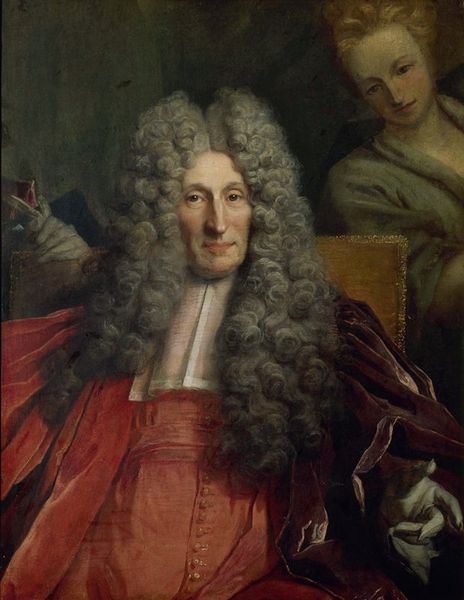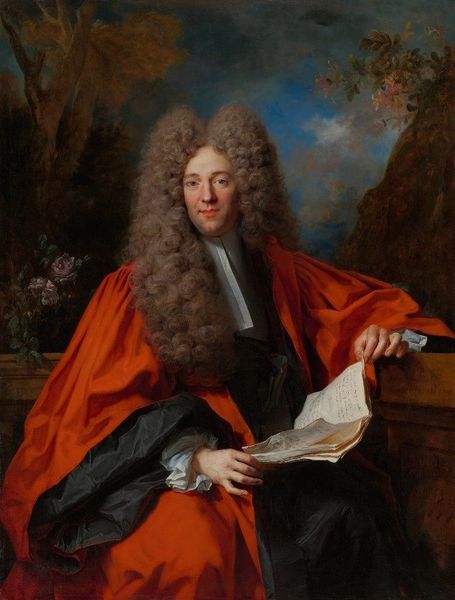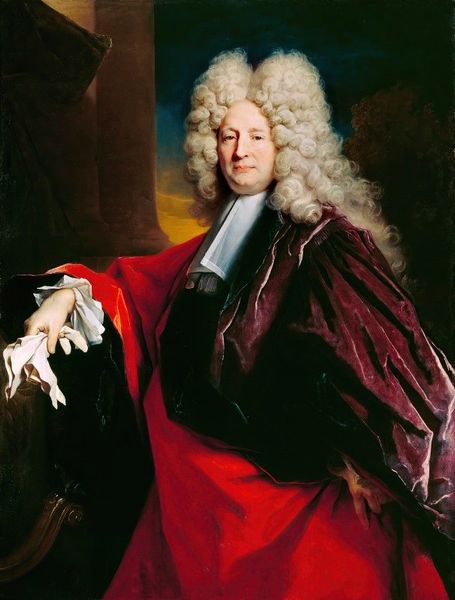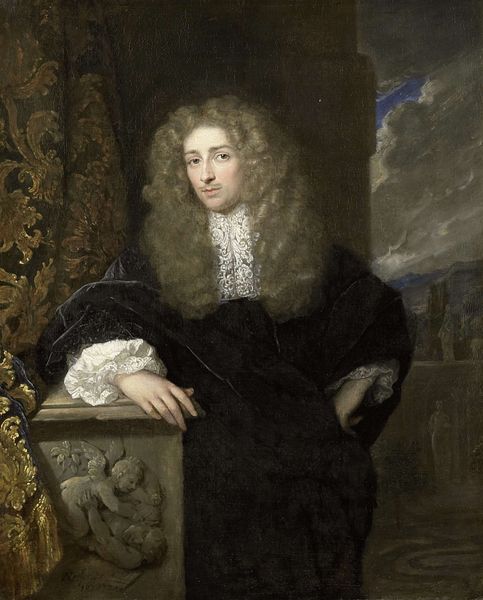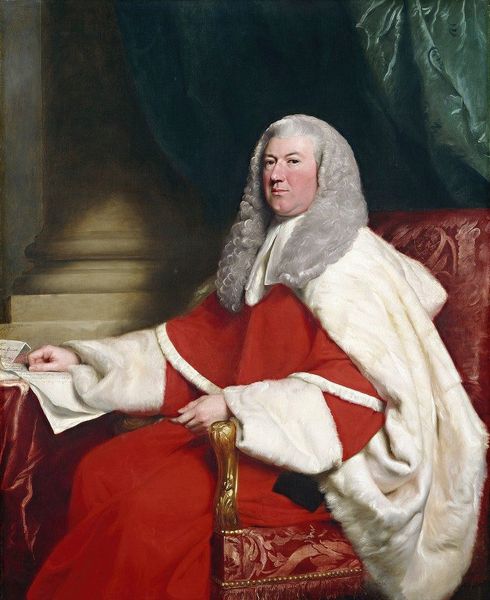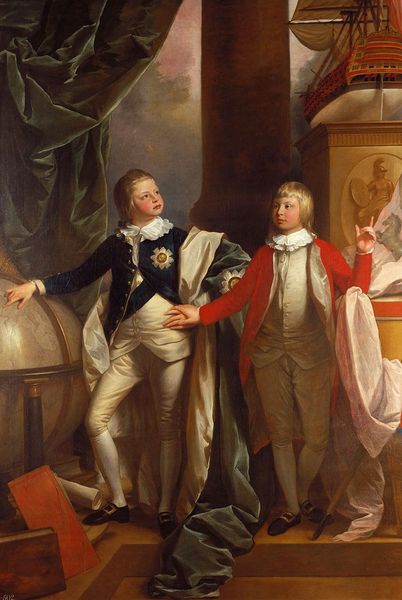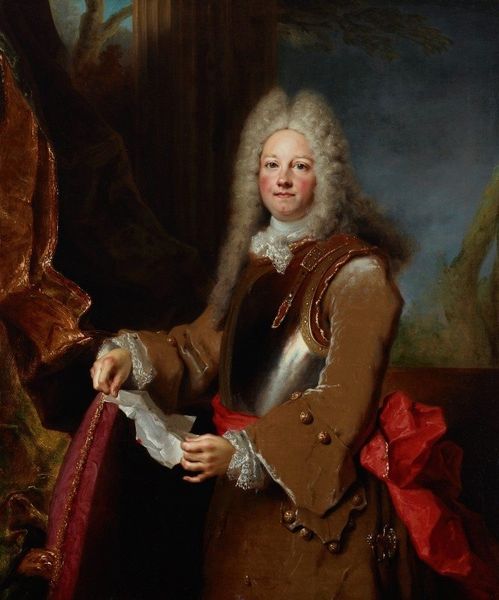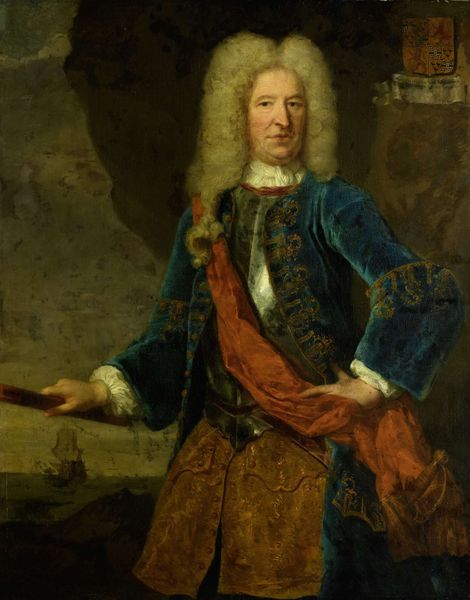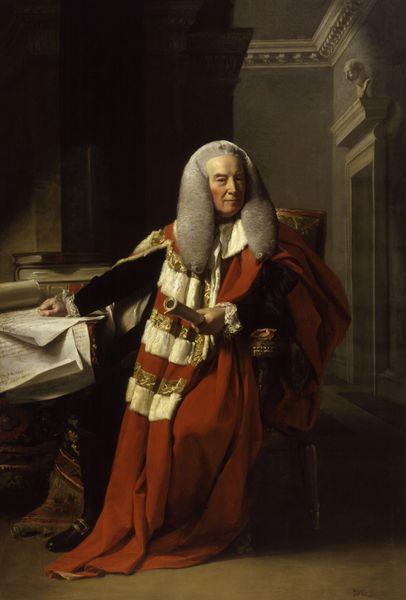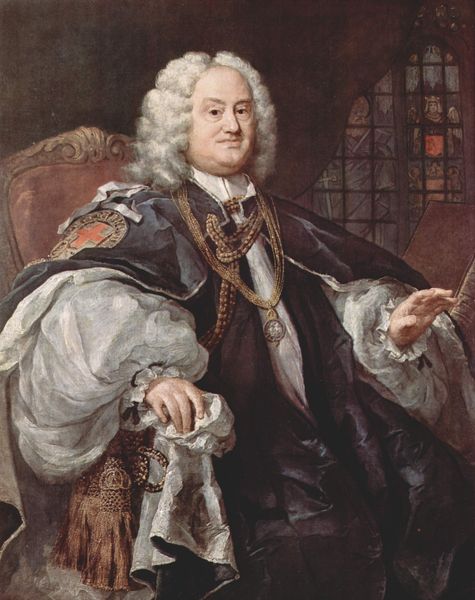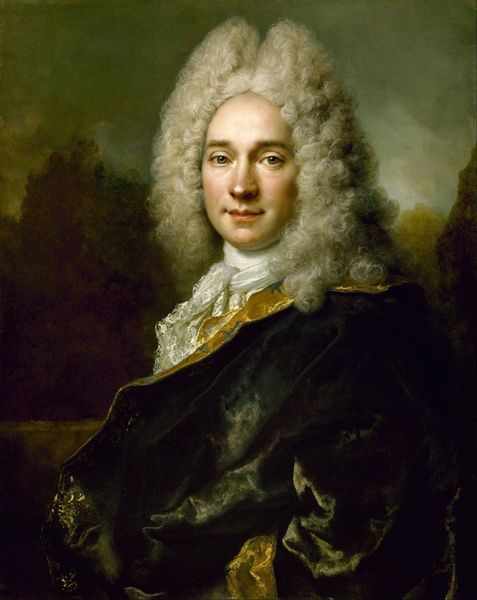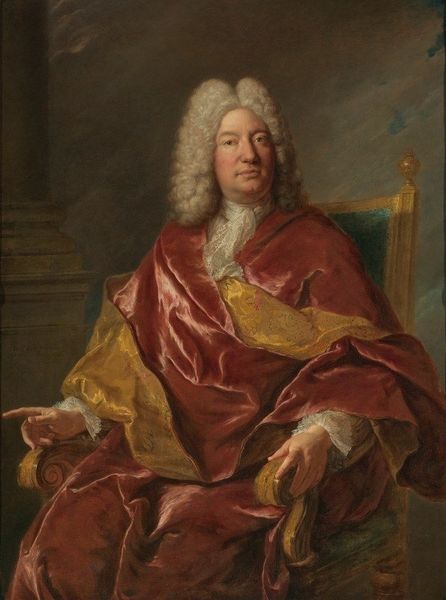
painting, oil-paint
#
portrait
#
figurative
#
baroque
#
painting
#
oil-paint
#
group-portraits
#
academic-art
Copyright: Public Domain: Artvee
Nicolas de Largillière painted these two magistrates in 1702 with oil on canvas. Note the opulent robes and voluminous wigs; these are potent symbols of status, speaking volumes about their social standing and power within French society. The gesture of the magistrate on the right, with his open palm, has echoes that resonate through art history. One sees it in Roman oratory, a gesticulation of command and persuasion. It reappears during the Renaissance, conveying authority and knowledge. Here, in this 18th-century portrait, it is a declaration of their governance and influence, a claim to legitimacy and control. It is worth remembering that these symbols often outlive their original contexts, shifting in meaning. Their enduring appeal lies in their ability to tap into our collective memory, stirring subconscious feelings of authority, respect, and perhaps even awe. Observe the psychological weight these symbols carry; they engage us on a profoundly human level. Indeed, symbols such as the robes and gestures reappear across time, evolving, adapting, and resurfacing in new forms and contexts, a testament to their enduring psychological power.
Comments
No comments
Be the first to comment and join the conversation on the ultimate creative platform.
